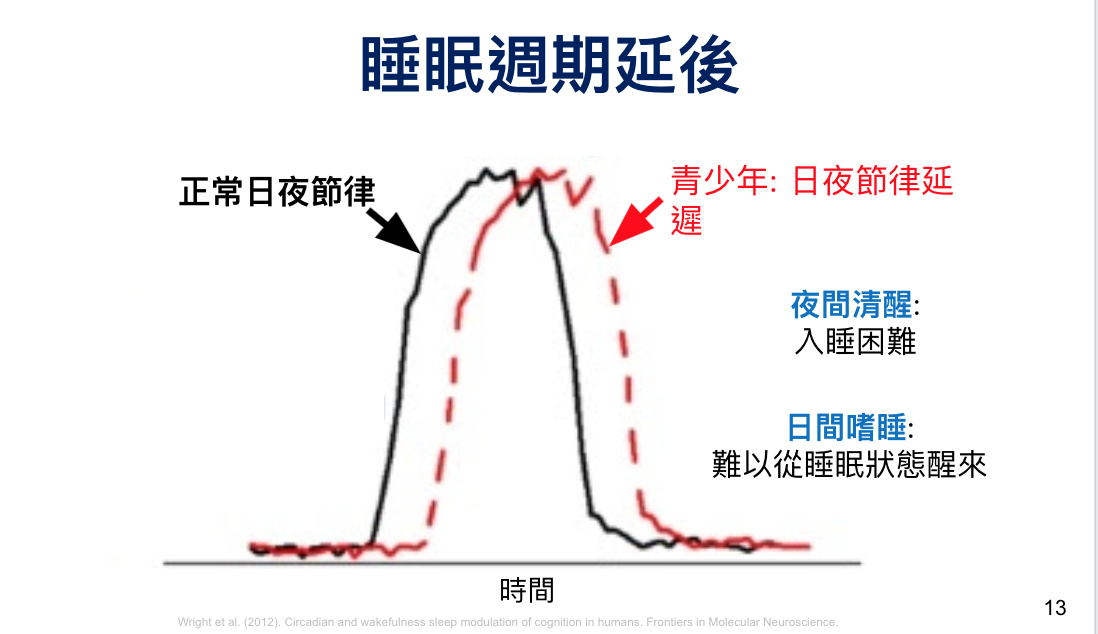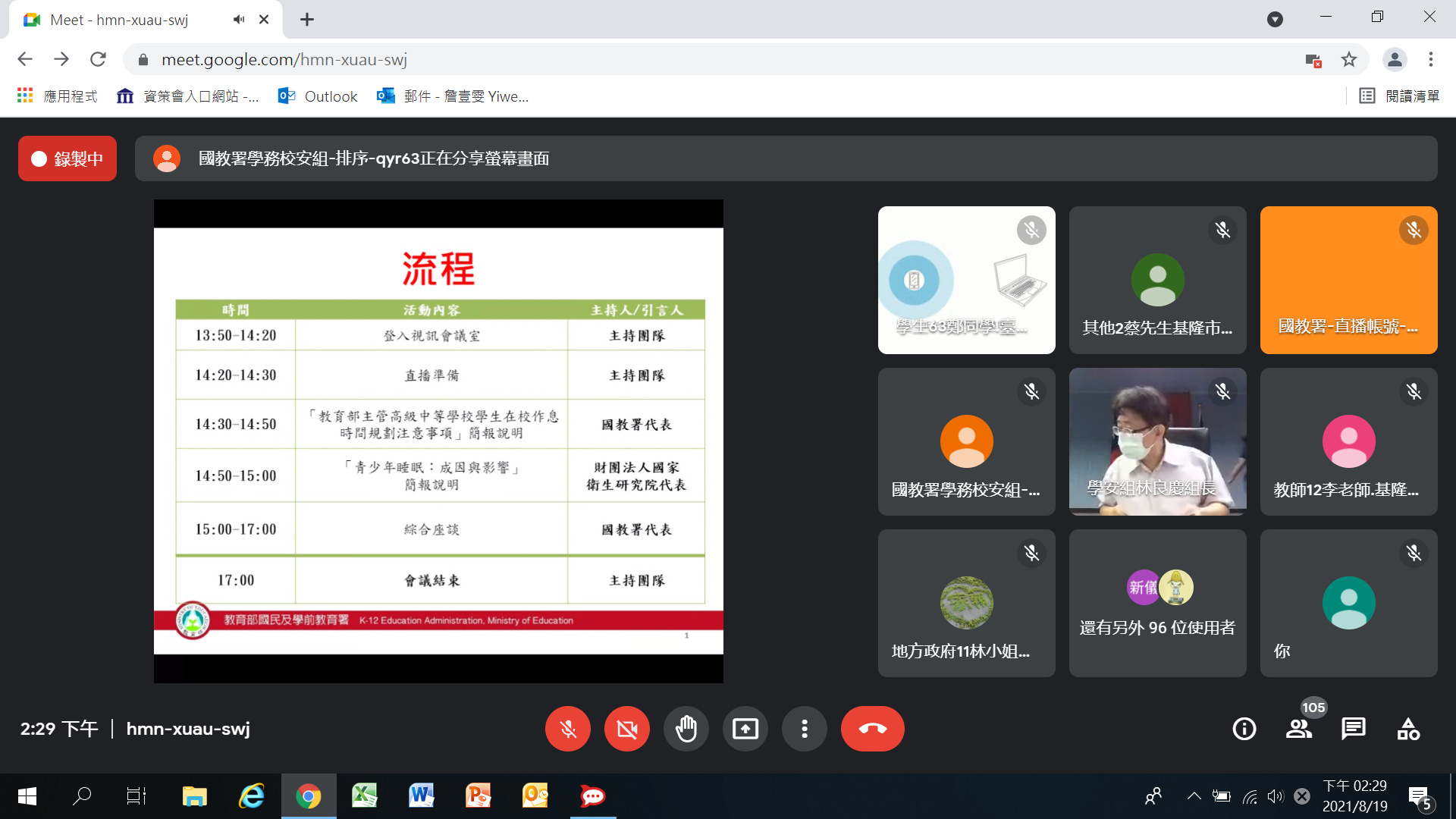Time management is also a kind of independent learning
During the epidemic, hundreds of students used video conferencing to continue to care about public issues.
In August, high school students in Taiwan spent the longest summer vacation due to the epidemic. At the same time, the public hearing of “Class Time for National and High Schools”, which has attracted the attention of all walks of life, has completed the preliminary collection of opinions in the online participation of more than a hundred students.
This public hearing and the 87th Open Government Collaboration Meeting of the Ministry of Education in charge of senior secondary school students’ work and rest time planning and implementation of precautions was derived from a middle school student’s public policy network in December last year Participate in the proposal of the platform (hereinafter referred to as the JOIN platform), “The school time for national high schools will be changed from 09:30 to 05:00”, and I hope to postpone the school time. In fact, as early as 2016, high school students put forward a proposal on the JOIN platform that “the current high school students in Taiwan generally lack sleep, and the time for high school students to go to school should be delayed.” At that time, after the Ministry of Education received opinions from all walks of life, it established norms for the definition of the number of learning sessions and non-learning sessions, and the aforementioned “Notes” were born. Five years later, the students clamored again, just in time for the system to have a chance to be discussed and reviewed.
“Let students learn to manage their own time, isn’t it a manifestation of letting students “learn independently”?” Some parents supported the proposal at the meeting. However, some NGOs released the results of online questionnaire surveys, and only 18% of parents agreed. The objections include the inconvenience of parents to pick up and drop off, the trend of tutoring students to go home later, the content of the syllabus cannot be taught, the students will only go to bed later when the class is postponed, and the students cannot manage their time… etc., some media outlets The results of the road survey are no different from our pre-conference review of opinions.
When we assisted the National Education Administration to start the preparations for the collaborative meeting, the first task was to sort out people with different positions and what reasons they would support and oppose. Only in this way can we learn more about who can be invited to participate in order to ensure the diversity of opinions. However, the collaborative meeting must go one step further and ask the “core questions”. Even if everyone has their own standards and views, is there a basic consensus that people with different positions agree with, or at least an undeniable bottom line? For example, no one is opposed to “making students more efficient in learning”, which can be the core issue.
Based on this, the National Education Department asked the National Health Institute for help to explain the causes and effects of adolescents’ sleep based on empirical data. The briefing of the National Health Institute presents two main points:
- The recommended amount of sleep for adolescents and adults is indeed different. The recommended amount for adolescents from 14 to 17 years old is 8-10 hours, and for 18 to 64 years old, it is reduced to 7-9 hours.
- It is normal for adolescents to be awake at night and sleepy during the day due to the physiological factors of “delayed sleep cycle”.
This means that when discussing issues, if we say that students are lazy if they can’t wake up in the morning, and that they love to go to bed late, it is not fair.

In addition, the competent authority of the middle school is the local government, and the National Education Administration is based on its power and responsibility. Being able to respond to the high school part is also a prerequisite for participants to understand. When the dialogue can be based on empirical data, everyone is willing to work together to find solutions to improve student learning efficiency, and the discussion can follow in-depth and constructive.
Originally scheduled to hold a public hearing in the south and north, but it was changed to be handled online in response to the epidemic prevention policy. The gain from the epidemic is that everyone’s information capabilities have been significantly improved. Relying on the painstaking details of the National Education Administration and the high level of participation from all walks of life, the online public hearing of the National Education Administration has not only expanded the number of participants, but also has a very smooth meeting process. In the two public hearings, 60% of online participants were students, as well as representatives of local governments, parents, teachers, and related organizations in the jurisdiction of the country. There were about 165 and 360 people watching the live broadcast.
I am very happy that long-distance living has not diminished everyone’s enthusiasm for public affairs. I also saw the students make full preparations, and they were all sound and reasonable within the 3 minutes of speaking time. Some students said that the time of arrival at school is not the key point. First, they advocated the abolition of the North Korean Association, because the school can send any information through class guides, websites, or social software, and it is not a physical collection to be effective. It is also said that the appeal for arriving late is not to be lazy, but to live in a remote home, travel time is very long, and long-term lack of sleep and study will be greatly reduced. The opposing opinion is that as long as it is self-disciplined, the school stipulates that it can cooperate in several classes.
Colorful exchanges of opinions, from the implementation of flexible use of non-learning periods, spot checks for irregularities, to the review of the twelve-year syllabus, and the return to democratic procedures in each school. Students should be asked to work together to meet the needs of the school. Work and rest. The online software’s message board was also active in the conference. The students even set up an “offline discussion forum” on the message board because they did not agree with each other’s opinions, inviting each other to continue discussions on LINE and Facebook.

Preliminary preparations, live broadcast and subsequent verbatim records of the public hearing, provided The National Education Administration was able to improve the nutrients for attention; all the participants worked together to add fuelwood to the open government. At the moment when some countries restrict students’ right to choose by controlling online game companies, we are discussing how to allow students to have more room for self-management. Like the teachers and parents who spoke on the same day, I would like to express the deepest affirmation for the students’ high degree of enthusiasm for investing in public issues.
 (This work is licensed under a Creative Commons Attribution 4.0 International License.)
(This work is licensed under a Creative Commons Attribution 4.0 International License.)